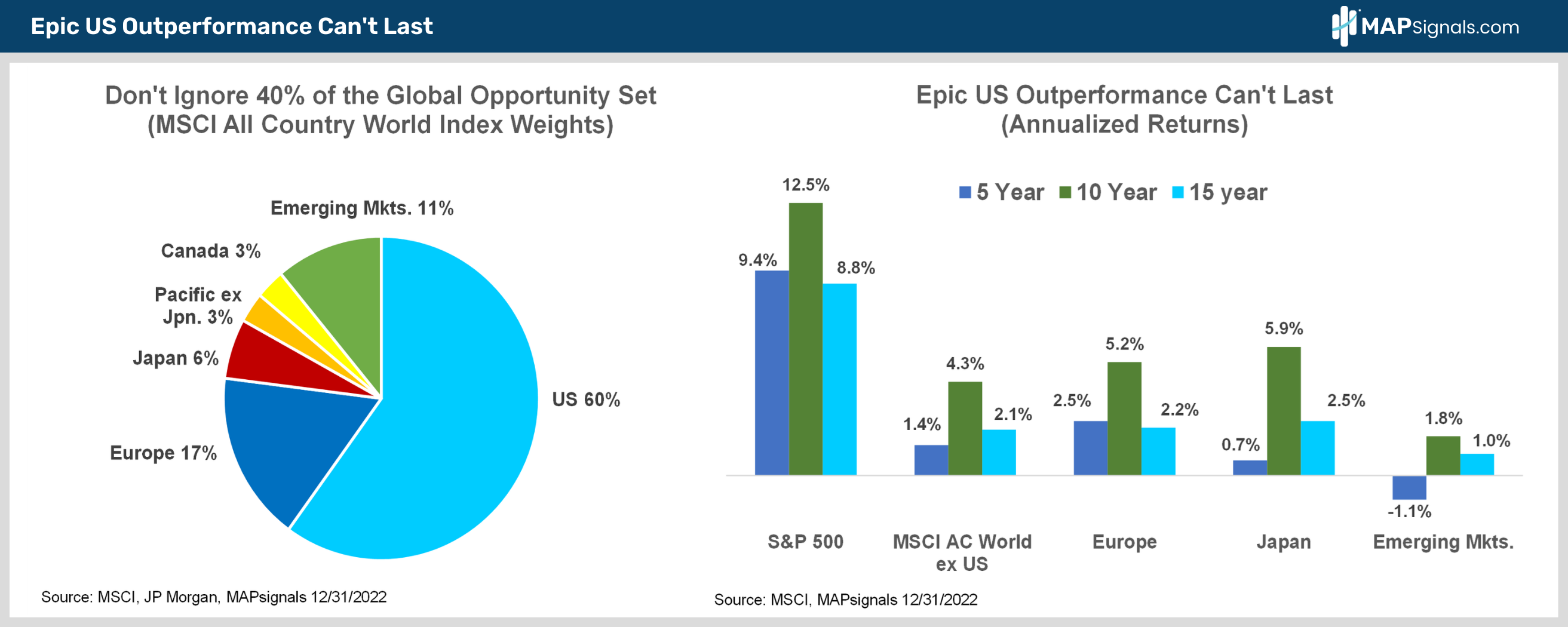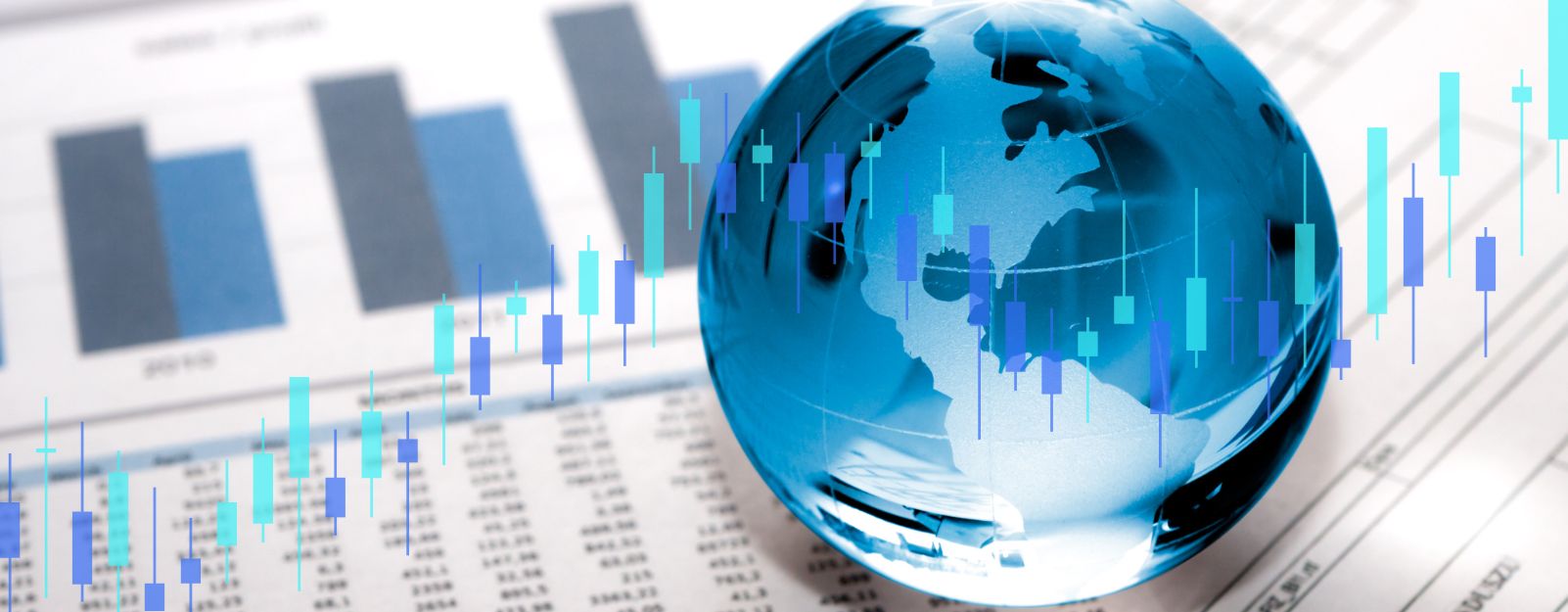
International Stocks Deserve a Fresh Look
International equities have been gathering steam lately. Many of you may be wondering if now’s the time to get more global and, more importantly, how best to do it.
Today, I’ll show you why the global stock rally has legs and why international stocks deserve a fresh look. The data paints a positive outlook for foreign allocations.
Then, I’ll show you how to play it with leading, low-cost ETFs seeing Big Money buying.
Alright, let’s hop to it.
International Stocks Deserve a Fresh Look
Let’s rewind a bit. In December, I told you Stocks May Do Better Than You Think in 2023. It’s early but so far so good. US stocks aren’t the only ones rebounding. International stocks ended January up 8.1% vs. the S&P’s 6.3%.
Experts recommend owning a diversified portfolio. Combining assets that can zig when others zag gives you a smoother ride. Getting more global is a great way to diversify.
It’s a big world out there. US stocks only represent 60% of global stock market value (chart).
The MSCI All Country World ex-US index is the leading international equity benchmark the pros use. It includes all non-US markets from Europe and Japan to emerging markets like China and India.
Over the years, we’ve seen long stretches of international outperformance over US stocks. However, it’s been a while. Over the last 15 years, US investors have soured on global stocks as they’ve dramatically underperformed the S&P 500, gaining only 2.1% annually vs. the S&P’s 8.8% (chart).
But there are signs overseas stocks deserve a fresh look. As Warren Buffett once said: “be fearful when others are greedy and greedy when others are fearful.”
Let’s dig into it. We’ll start with the global economic outlook.
Most economic forecasts end up being wrong. Economists update their calls monthly and paper over their inability to predict the future. So, I won’t bore you with the latest GDP forecast from the IMF etc… What matters is whether a country’s economic news is coming in better or worse than Wall Street expects.
The Citi Economic Surprise Indices measure how much a country’s incoming economic data is beating or missing consensus forecasts. Positive readings indicate economic news is exceeding expectations while negative prints mean the opposite.
Check out this chart. Europe’s economic numbers are crushing expectations! So much for the recession everyone thought was a slam dunk six months ago. A mild winter is helping Europe handle high natural gas prices better than feared.
Meanwhile, China’s Covid re-opening is sparking better than expected economic news there too. As for the US, while the data is solid, it’s about in line with economists’ forecasts.
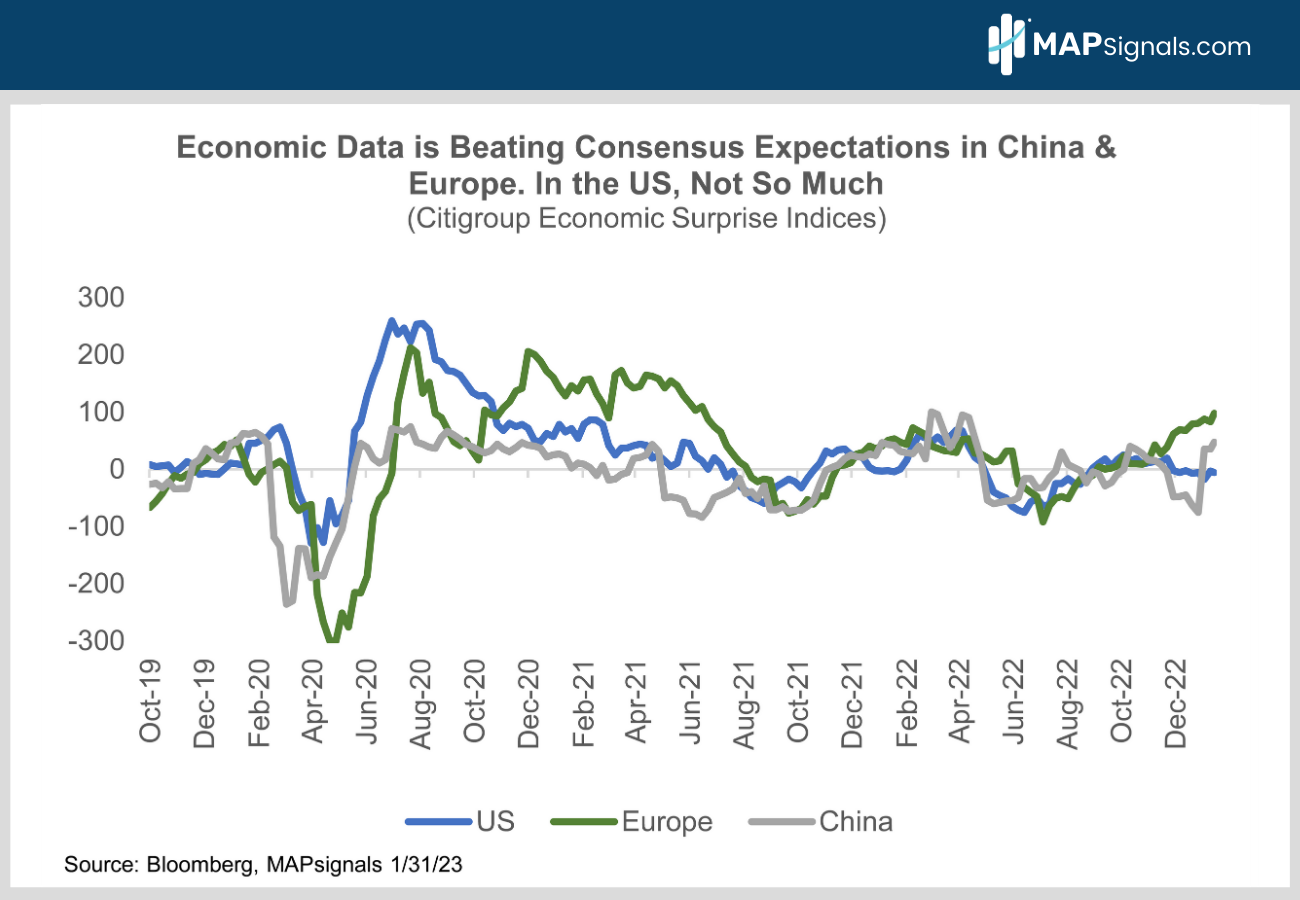
OK, but is better-than-expected foreign economic news translating into improving fundamentals? You bet!
Check out this next chart. 2023 consensus earnings forecasts for the S&P 500 peaked in June and have been drifting lower ever since. On the flip side, international profit forecasts bottomed in October and have since been heading higher.
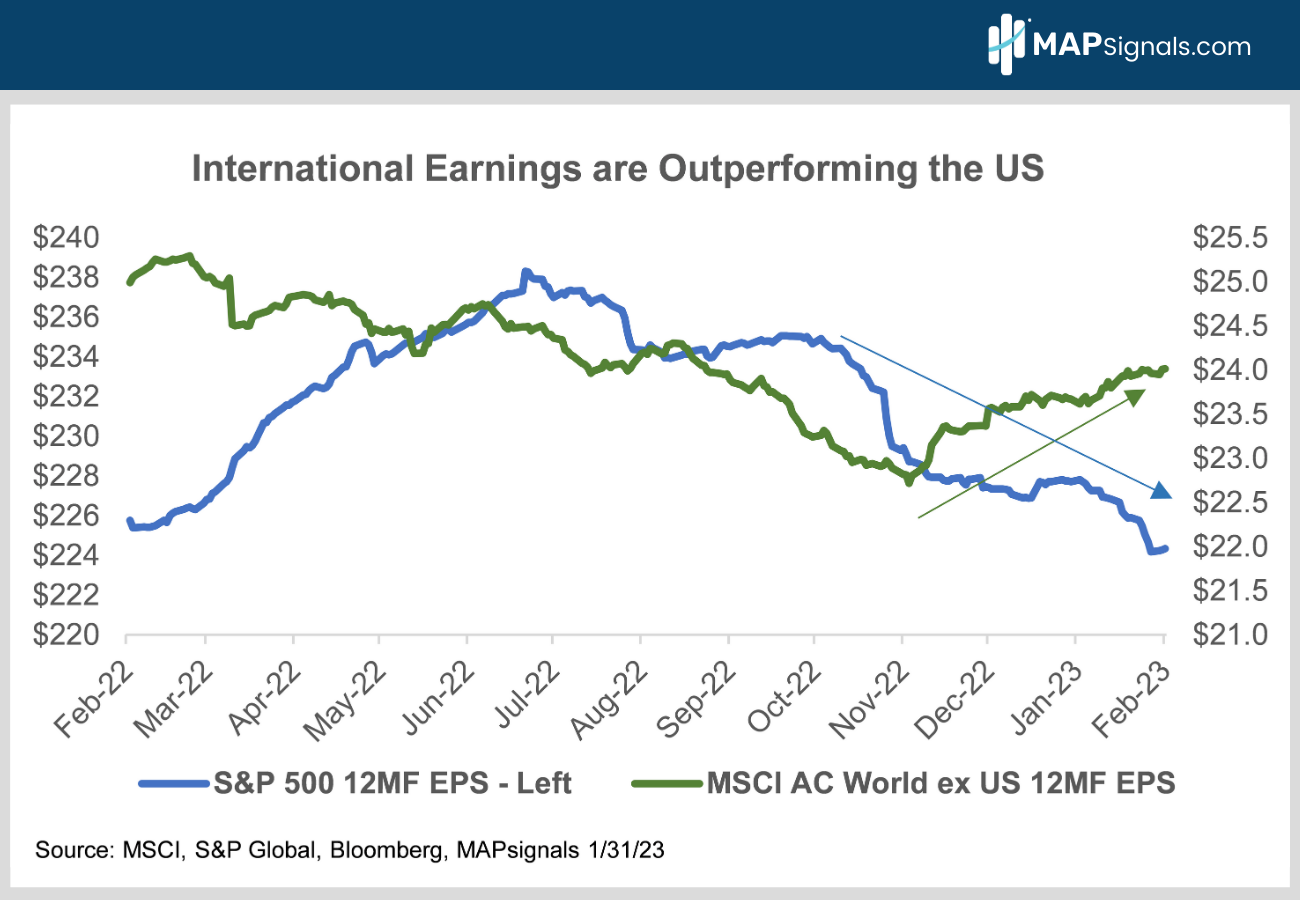
Let’s check in on valuations. Everybody loves a bargain. Foreign stocks fit the bill. They trade at only 12.7X 2023 consensus earnings forecasts, that’s a 30% discount to the S&P 500’s 18.2X. Historically, international stocks have traded at only a 17% average discount to the US (chart).
Any way you slice it, after 15 years of going nowhere, international stocks deserve a fresh look.
The icing on the cake is international stocks’ juicy 3.2% dividend yield. That’s double the S&P 500’s meager 1.7% payout. When inflation is high, dividends don’t just help maintain your purchasing power, they cushion your returns in what are often more volatile, lower return environments.
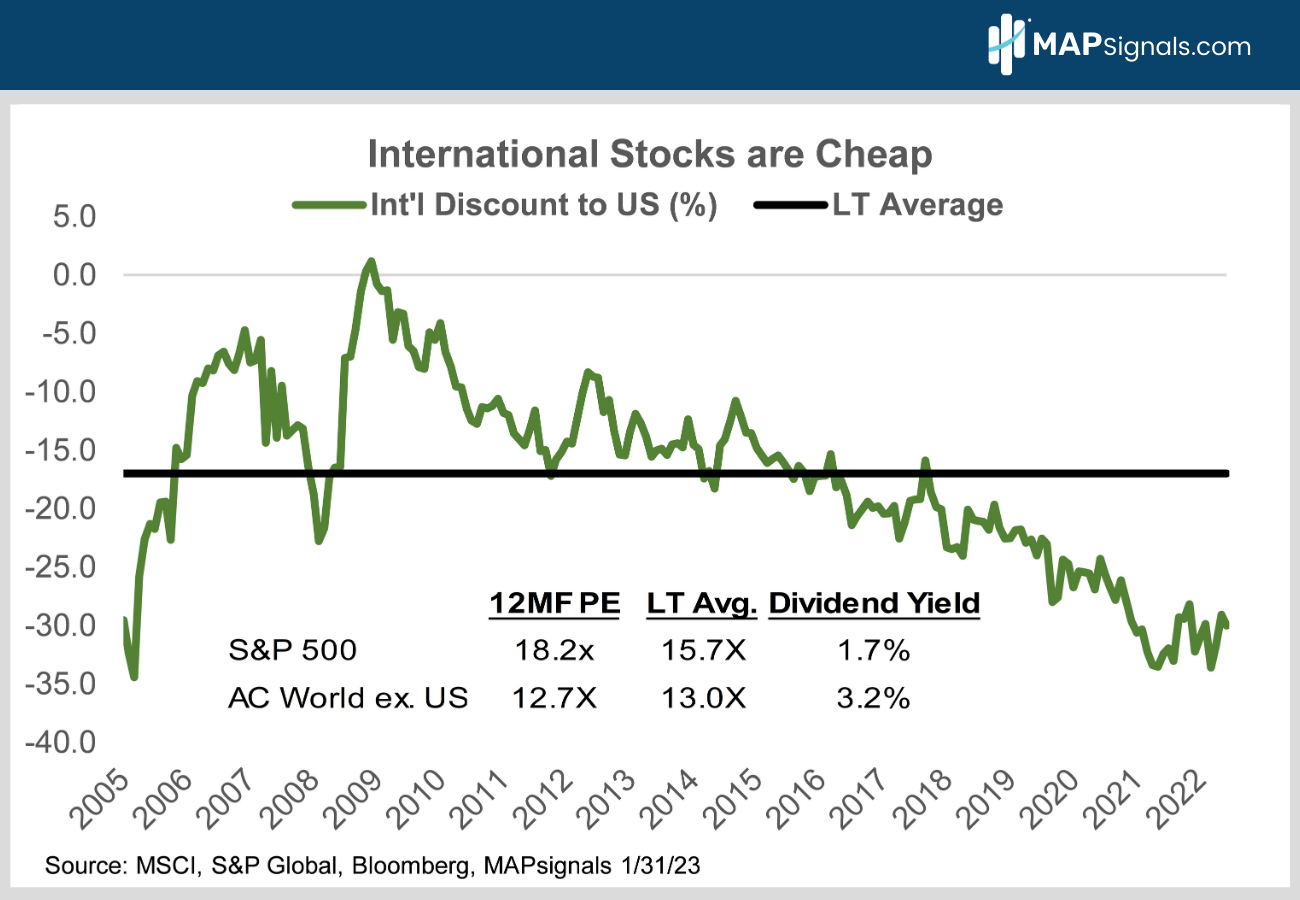
Dollar Weakness Helps International Stock Performance
Over the long term, currency tends to be a wash. But in any given year currency translation can have a big impact on how well US investors do investing in overseas stocks.
Here’s how it works. When you invest your US dollars in foreign stocks, you want foreign currencies to go up vs. the dollar. That pads your returns. On the flip side, when the dollar is strong against the euro or the yen, it subtracts from how much you earn in foreign stocks.
Now for the chart. The dollar was red hot last year. Look how much worse international stocks did in US dollar terms (green) vs. local currency terms (red).
The good news is the opposite is happening this year. The dollar is weak and that’s boosting dollar denominated foreign stock returns. Notice how the green returns are higher than the red returns this year.
All other things being equal, it’s always best to buy foreign stocks when the dollar is flat to weak.
So, where’s the dollar headed next? In October, I predicted the greenback was peaking in Don’t Fear King Dollar. The Dollar Index is down 11% since. Falling inflation, slowing Fed rate hikes and better than expected overseas growth should keep the greenback soft. That’s good news for US investors’ returns in foreign stocks.
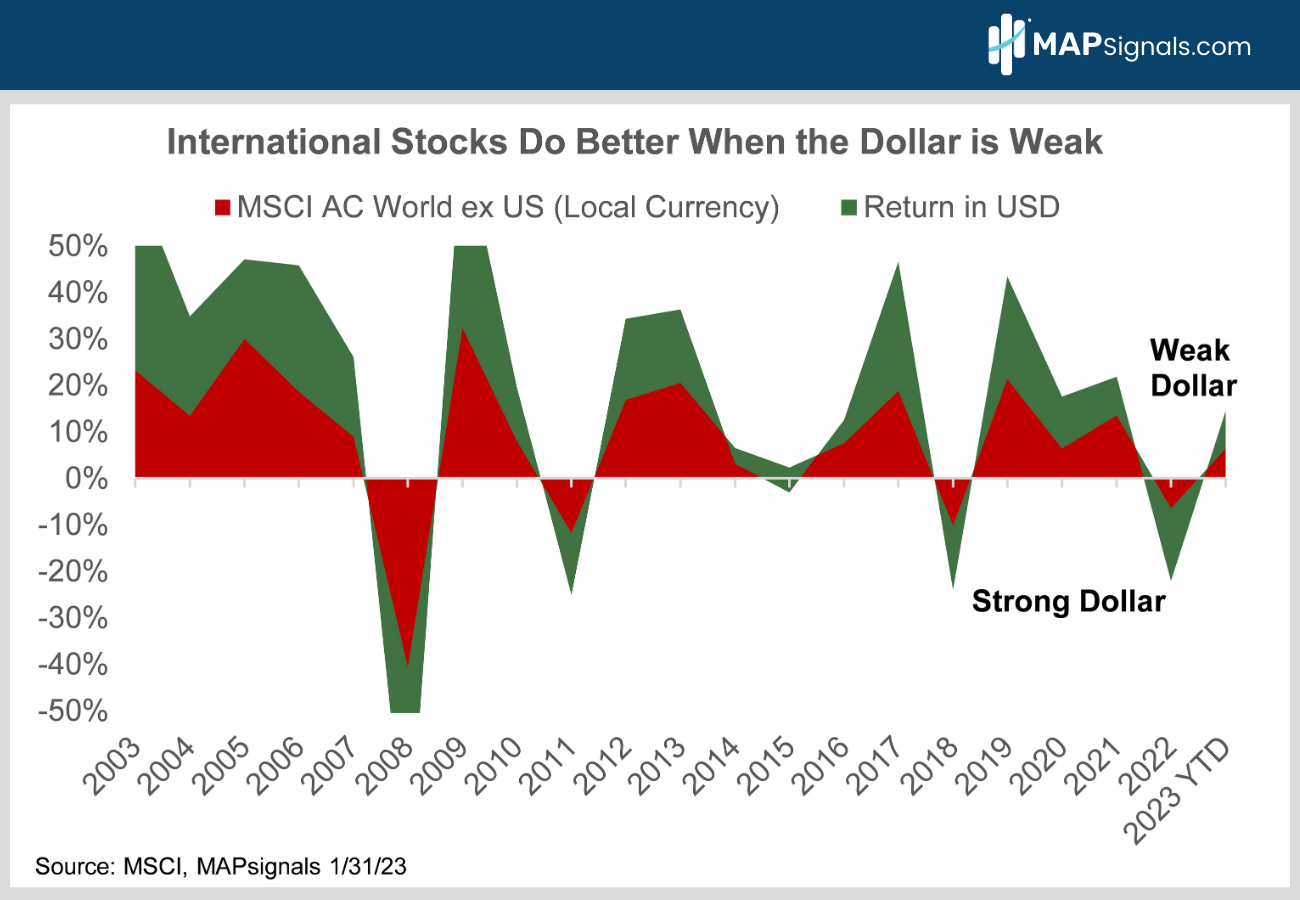
How To Play It
ETFs that track leading international benchmarks make it easy to go global. Countries are weighted according to the size of their market, so you don’t have to worry about how much to put where.
If you want to keep it simple you can buy the whole world outside the US in one ETF. If you’re more active, you can couple a developed market ETF with an emerging market ETF or even bolt on satellite allocations to individual country ETFs.
As a rule of thumb, the more long-term your portfolio, the more diversified you should be. Big individual country bets work best as short-term trades. No country outperforms forever.
Always look for a super-low expense ratio. Costs vary widely in the international space. Similar products can have wildly differing fees. It pays to do your homework. MAPsignals can help.
Here are some leading, low cost, international ETFs seeing Big Money buying.
If you want to keep it simple with one catch-all ETF that gives you the whole world outside the US, check out IXUS from iShares. It’s got $29B in assets, a healthy 2.9% dividend yield and a rock-bottom 0.07% expense ratio.
Better yet, it’s been seeing Big Money buying since it bottomed out in October.
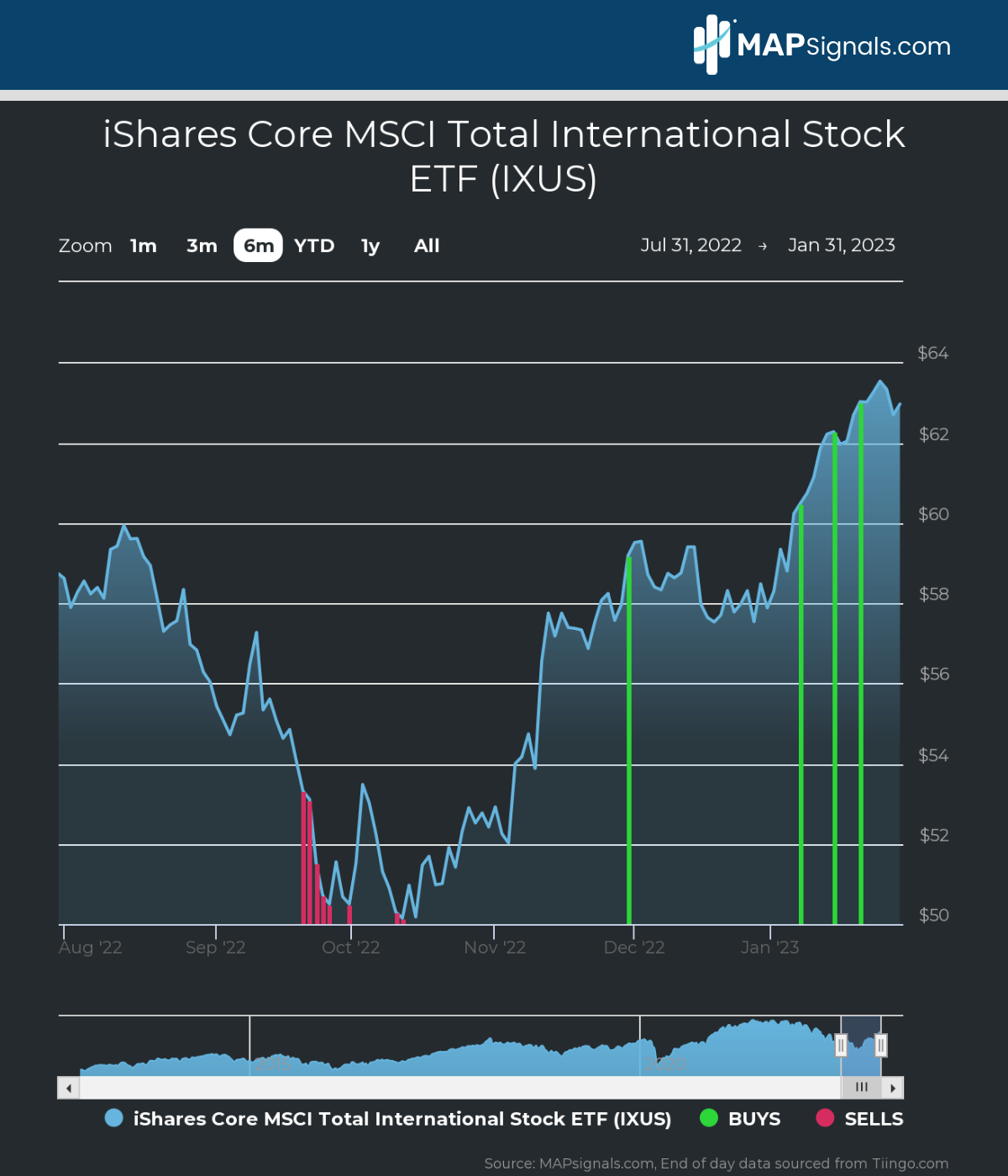
If you want to get more active check out IDEV and IEMG from iShares. IDEV tracks developed foreign markets like Europe, Japan, Australia and Canada. IEMG tracks emerging markets like Brazil, India and China.
Owning both lets you easily overweight developed or emerging markets. Remember that the MSCI ACWI ex-US Index is 72% developed and 28% emerging. So, if your allocations differ too widely from that you risk lagging the index.
IDEV has $8.8B in assets, a healthy 2.8% dividend yield and an ultra-low 0.04% expense ratio. Better yet, it’s been seeing aggressive institutional January buying.
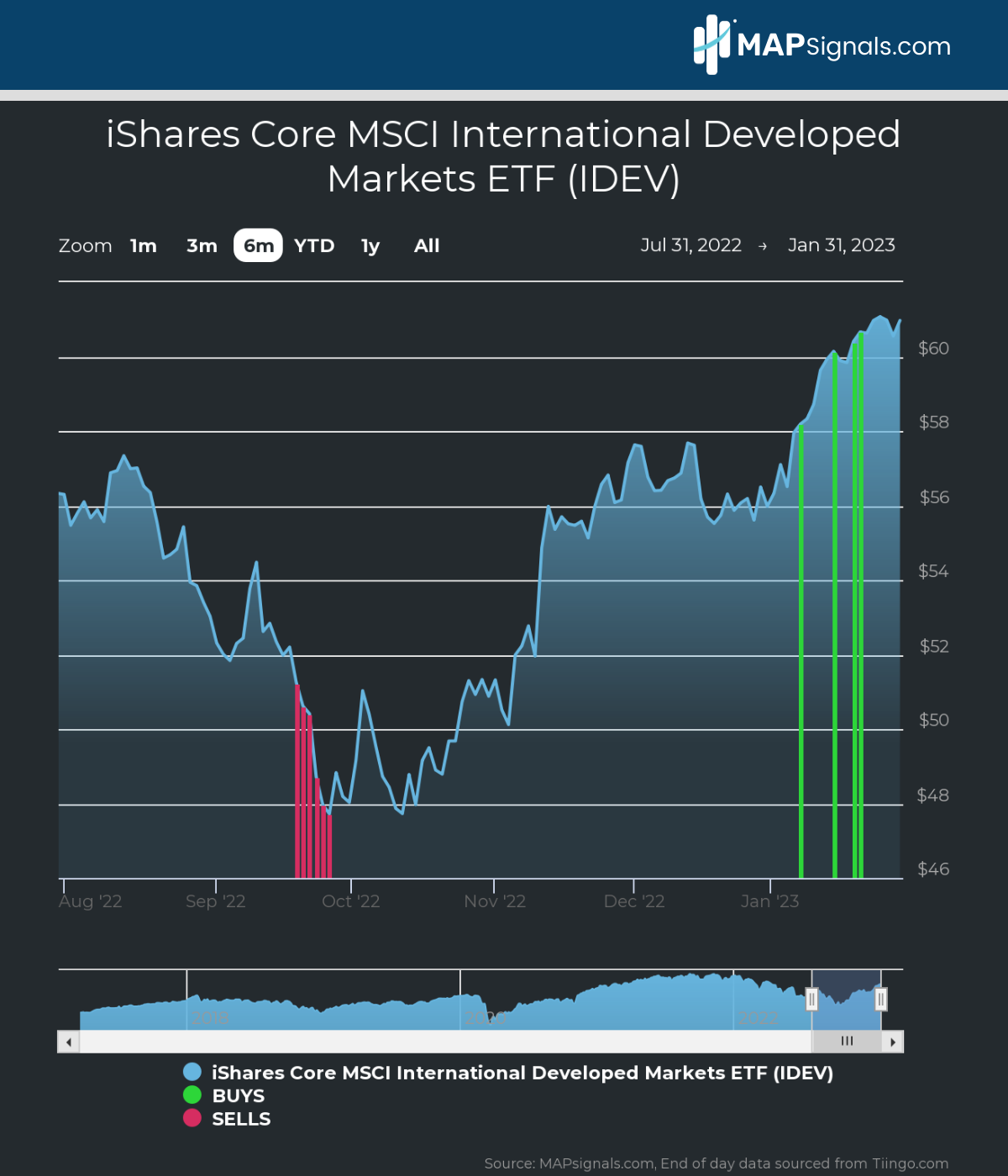
Turning to IEMG, it’s huge with $63B in assets. It yields a healthy 3% and costs only 0.09%. It’s also seen a pick-up in Big Money buying this year.

For investors looking for more concentrated, tactical trades, Europe and China have been outperforming other international markets. We highlighted the top 4 European ETFs specifically a few weeks back. EZU tracks European markets and FXI tracks China.
These ETFs are a bit pricier than the broader ETFs mentioned above, but if you don’t own them long, cost matters less. They’re both big and liquid and great for trading.
To top it off, check out the massive inflows they’re seeing in these 2 charts:
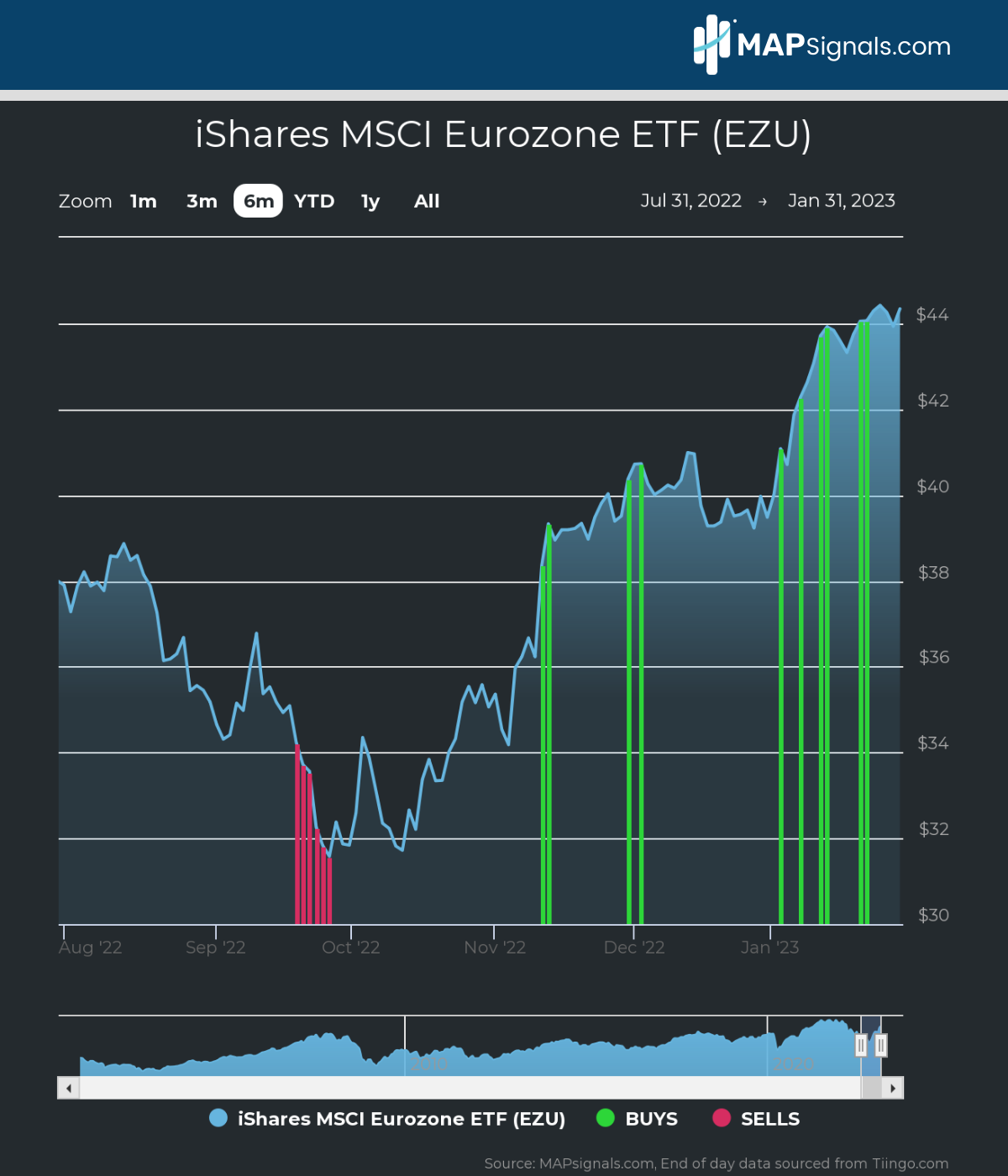
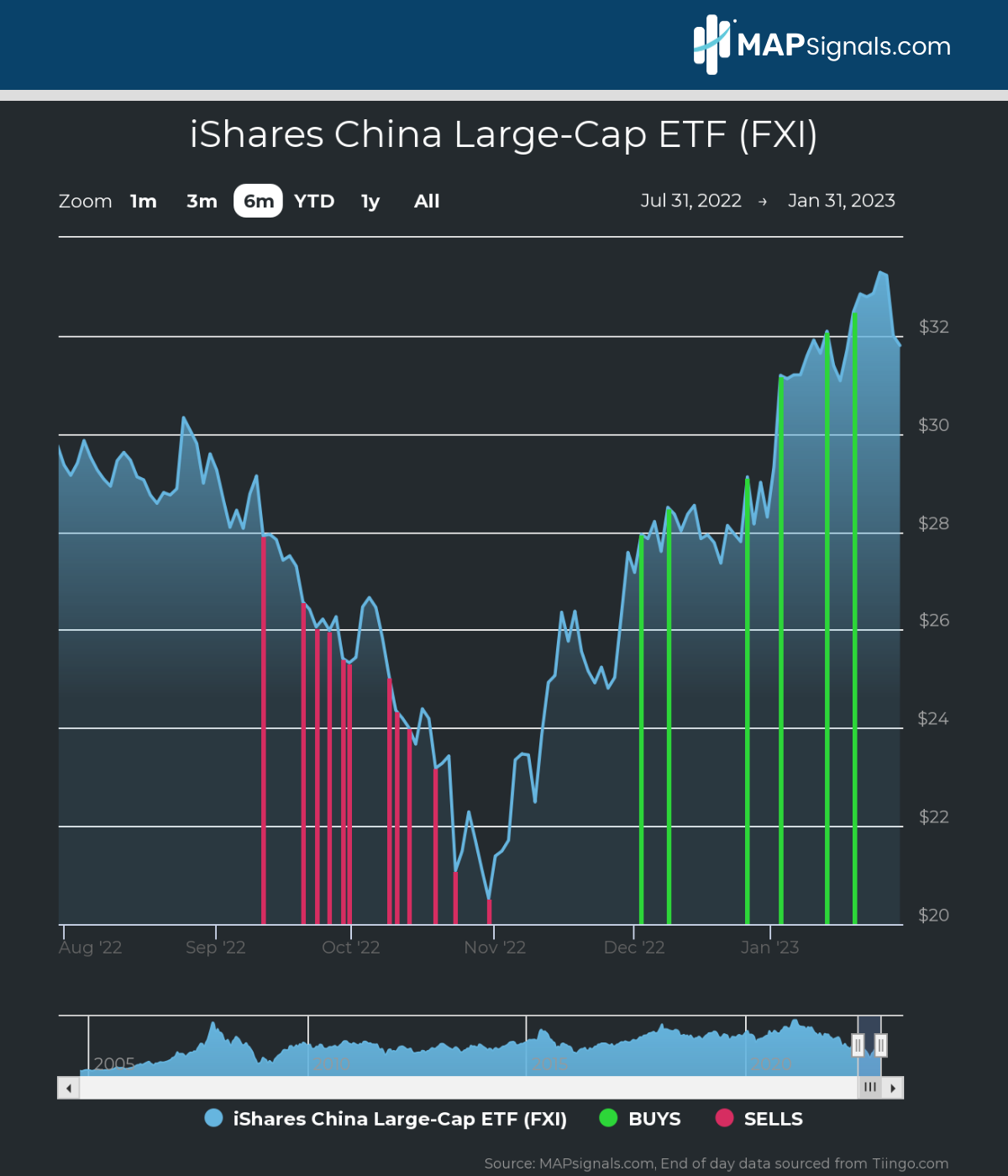
Bringing It All Together
It’s a big world out there! Don’t limit yourself. After 15 years of brutal underperformance, international stocks look ripe to outperform.
Global growth is beating low expectations, foreign earnings momentum is ramping, valuations remain compelling and dollar weakness is providing a nice performance tailwind for US investors.
ETFs that track leading international equity benchmarks make it easy to go global. IXUS, IDEV, IEMG, EZU & FXI are a great place to start, and our ETF ranking process agrees.
To go global, use a map! Get started with a subscription here.
Invest well,
-Alec

